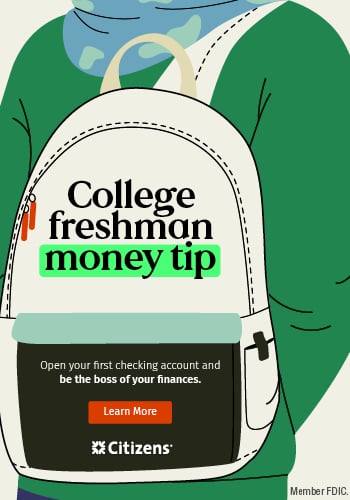There is most definitely an order to go through when doing a financial aid search. Seeking out aid in the right way can save you thousands of dollars and reduce your loan debt substantially. So check out our list below to see how to prioritize your financial aid opportunities!
1. Federal Aid: Scholarships & Grants
File the FAFSA and CSS. We cannot stress this enough. Even if you think you won’t qualify (which is one of many bad excuses) or won’t receive any aid—file the FAFSA. The FAFSA is used to determine a student’s financial need based on their family’s circumstances—this can lead to federal scholarships, grants, work-study programs, and loans.
The government is the largest provider of college scholarships and grants, and so this should be your first stop when looking for aid. Scholarships and grants are gift-aid that does not have to be paid back, unlike loans.
2. College Aid: Award Letters
The next biggest provider of scholarships and grants are the colleges themselves. When a student is accepted, the college will send them an award letter. Detailed in the financial aid award letter is what the school is willing to offer them. This will include scholarships and grants (as well as potentially loans).
It should be noted that you can appeal award letters for more aid. What they offer you initially is not necessarily set in stone, and may actually shift. Be sure to reach out to the school’s financial aid office—even before you’re accepted—to ask questions and figure out what they’re willing to do for a person in your unique situation.
3. Outside Scholarships
There’s no doubt that scholarships are the best way to pay for college; and while the government and colleges provide the most, private scholarships (one of two kinds of scholarships) are a great avenue to consider as well. Outside scholarships can come from a myriad of sources—local businesses, your high school, national companies, churches, organizations, and associations, etc.
These are typically what people think of when they hear the word “scholarship.” Each will be different and have varying requirements or goals in mind. Some will be geared towards paying tuition, others will offer aid for textbooks or room & board. They are as varied as the sponsors themselves. From standard scholarships like impressive academic prowess to unique scholarships like zombie apocalypse preparedness, there is a scholarship out there for every type of student. Block out some time to search for this form of financial aid; you won’t regret it.
4. Work-Study Programs
A federal work-study program is great for a number of reasons. 1: The money you earn from your job goes toward your college fees. 2: You gain valuable working experience, likely related to the field you’re studying. 3: It’s part-time so you still have plenty of hours in the day to focus on classes, studying, and projects.
5. Federal Student Loans
Only after you’ve exhausted the previous 4 options should you even consider turning to loans. Student loan debt is a very real problem in America and stems in large part from students and families not properly researching and applying for the available aid.
That being said, you should always turn to federal student loans before ever thinking of private loans. Federal student loans offer lower interest rates and more diverse and flexible repayment programs. There are a number of programs available. Additionally, there are student loan forgiveness plans that may erase your debt entirely if you qualify for them.
6. Private Student Loans
This should be the very last resort. Private loans often have higher interest rates and stricter repayment rules than federal student loans. It’s important to research available options and plans to pick the one that works best for your own situation.







